Dacia Spring vs Kia Stonic – Which one offers the better deal?
Everyday use, family trips or long-distance drives – here’s where the differences show.
Discover whether Dacia Spring or Kia Stonic fits your lifestyle better.
Costs and Efficiency:
Price and efficiency are key factors when choosing a car – and this is often where the real differences emerge.
Dacia Spring has a noticeable advantage in terms of price – it starts at 14500 £, while the Kia Stonic costs 19400 £. That’s a price difference of around 4963 £.
Engine and Performance:
Power, torque and acceleration are the classic benchmarks for car enthusiasts – and here, some clear differences start to show.
When it comes to engine power, the Kia Stonic has a clearly perceptible edge – offering 100 HP compared to 65 HP. That’s roughly 35 HP more horsepower.
In acceleration from 0 to 100 km/h, the Kia Stonic is noticeable quicker – completing the sprint in 11.30 s, while the Dacia Spring takes 13.70 s. That’s about 2.40 s faster.
In terms of top speed, the Kia Stonic performs evident better – reaching 179 km/h, while the Dacia Spring tops out at 125 km/h. The difference is around 54 km/h.
There’s also a difference in torque: Kia Stonic pulls clearly perceptible stronger with 200 Nm compared to 125 Nm. That’s about 75 Nm difference.
Space and Everyday Use:
Cabin size, boot volume and payload all play a role in everyday practicality. Here, comfort and flexibility make the difference.
Seats: Kia Stonic offers a bit more seating capacity – 5 vs 4.
In curb weight, Dacia Spring is slightly lighter – 1013 kg compared to 1195 kg. The difference is around 182 kg.
In terms of boot space, the Kia Stonic offers slightly more room – 352 L compared to 308 L. That’s a difference of about 44 L.
In maximum load capacity, the Kia Stonic performs slightly better – up to 1155 L, which is about 151 L more than the Dacia Spring.
When it comes to payload, Kia Stonic distinct takes the win – 455 kg compared to 302 kg. That’s a difference of about 153 kg.
Who wins the race?
The Kia Stonic proves to be outperforms in nearly all aspects and therefore becomes our DriveDuel Champion!
Kia Stonic is the better all-rounder in this comparison.
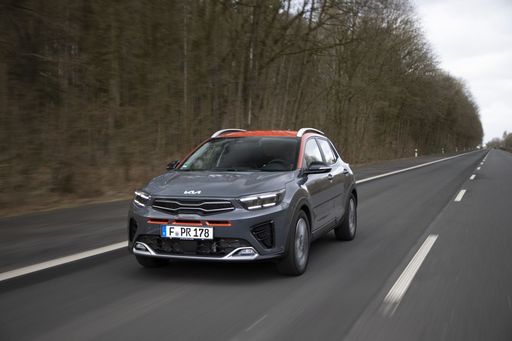
Kia Stonic
Dacia Spring
The Dacia Spring stands out as an affordable and environmentally friendly option in the electric vehicle market, combining practicality with a compact design ideal for urban settings. Its minimalist interior, while basic, provides all the essential features needed for a comfortable drive, reflecting its cost-effective approach. The vehicle's performance suits city driving, making it an appealing choice for those seeking an entry-level electric car.
details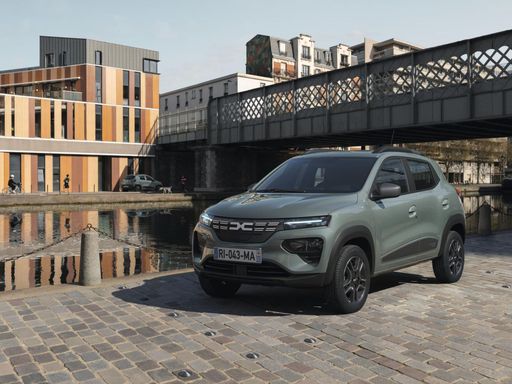 @ dacia-presse.de
@ dacia-presse.de
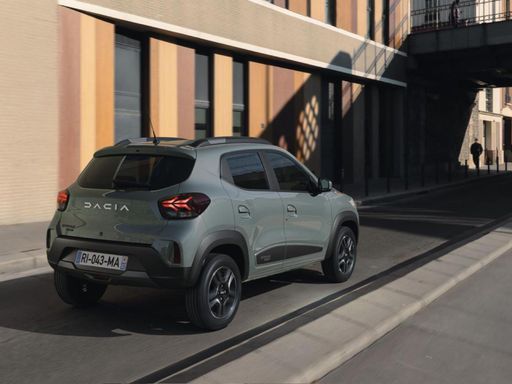 @ dacia-presse.de
@ dacia-presse.de
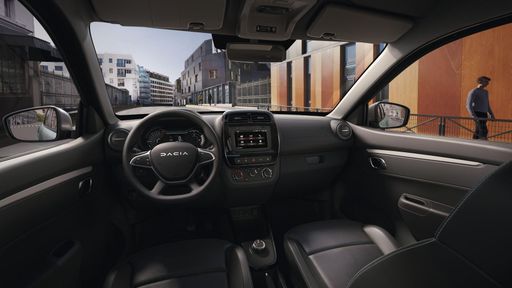 @ dacia-presse.de
@ dacia-presse.de
Kia Stonic
The Kia Stonic is a compact crossover that seamlessly blends bold design with practical functionality. Its distinctive, eye-catching exterior is complemented by a well-crafted interior offering a comfortable ride and intuitive technology for today's drivers. The Stonic is perfect for urban environments, providing agility and efficiency without compromising on style or performance.
details @ press.kia.com
@ press.kia.com
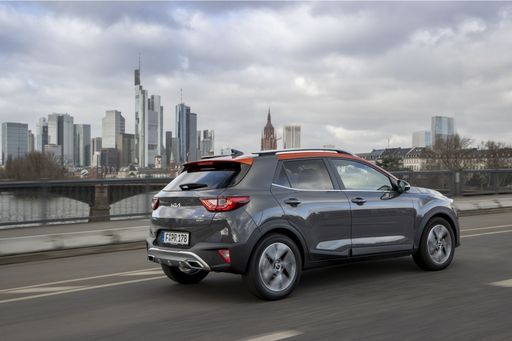 @ press.kia.com
@ press.kia.com
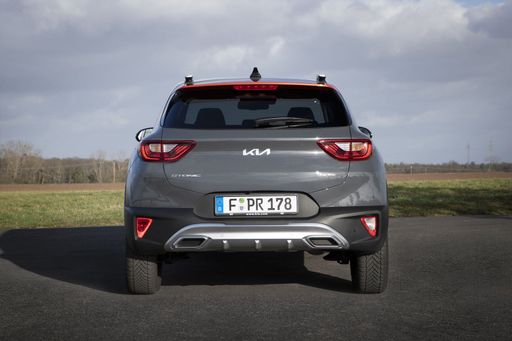 @ press.kia.com
@ press.kia.com
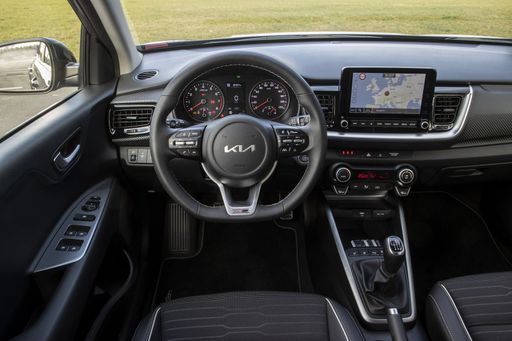 @ press.kia.com
@ press.kia.com
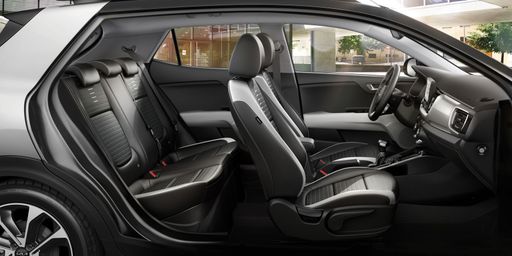 @ press.kia.com
@ press.kia.com

|

|
|
|
|
Costs and Consumption |
|
|---|---|
|
Price
14500 - 17100 £
|
Price
19400 - 25600 £
|
|
Consumption L/100km
-
|
Consumption L/100km
5.5 - 5.7 L
|
|
Consumption kWh/100km
13.2 - 14.1 kWh
|
Consumption kWh/100km
-
|
|
Electric Range
225 - 228 km
|
Electric Range
-
|
|
Battery Capacity
26.80 kWh
|
Battery Capacity
-
|
|
co2
0 g/km
|
co2
125 - 129 g/km
|
|
Fuel tank capacity
-
|
Fuel tank capacity
45 L
|
Dimensions and Body |
|
|---|---|
|
Body Type
SUV
|
Body Type
SUV
|
|
Seats
4
|
Seats
5
|
|
Doors
5
|
Doors
5
|
|
Curb weight
1013 - 1050 kg
|
Curb weight
1195 - 1260 kg
|
|
Trunk capacity
308 L
|
Trunk capacity
352 L
|
|
Length
3701 mm
|
Length
4140 mm
|
|
Width
1583 mm
|
Width
1760 mm
|
|
Height
1519 mm
|
Height
1505 mm
|
|
Max trunk capacity
1004 L
|
Max trunk capacity
1155 L
|
|
Payload
265 - 302 kg
|
Payload
450 - 455 kg
|
Engine and Performance |
|
|---|---|
|
Engine Type
Electric
|
Engine Type
Petrol, Petrol MHEV
|
|
Transmission
Automatic
|
Transmission
Manuel, Automatic
|
|
Transmission Detail
Reduction Gearbox
|
Transmission Detail
Manual Gearbox, Dual-Clutch Automatic
|
|
Drive Type
Front-Wheel Drive
|
Drive Type
Front-Wheel Drive
|
|
Power HP
44 - 65 HP
|
Power HP
100 HP
|
|
Acceleration 0-100km/h
13.7 - 19.1 s
|
Acceleration 0-100km/h
11.3 - 12.4 s
|
|
Max Speed
125 km/h
|
Max Speed
176 - 179 km/h
|
|
Torque
113 - 125 Nm
|
Torque
172 - 200 Nm
|
|
Number of Cylinders
-
|
Number of Cylinders
3
|
|
Power kW
33 - 48 kW
|
Power kW
74 kW
|
|
Engine capacity
-
|
Engine capacity
998 cm3
|
General |
|
|---|---|
|
Model Year
2024
|
Model Year
2024 - 2025
|
|
CO2 Efficiency Class
A
|
CO2 Efficiency Class
D
|
|
Brand
Dacia
|
Brand
Kia
|
What drive types are available for the Dacia Spring?
The Dacia Spring is available as Front-Wheel Drive.
The prices and data displayed are estimates based on German list prices and may vary by country. This information is not legally binding.
